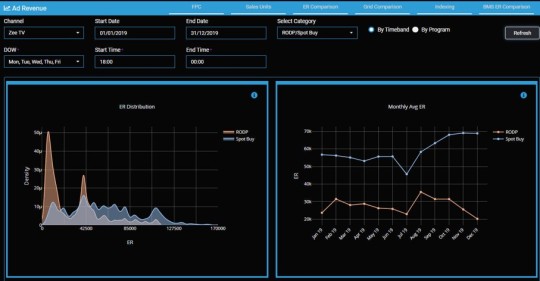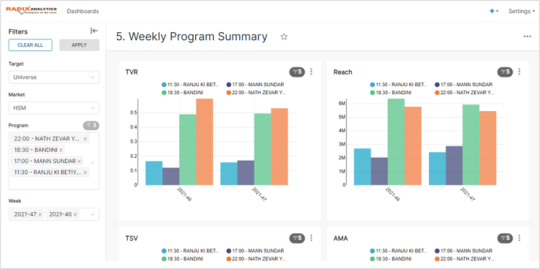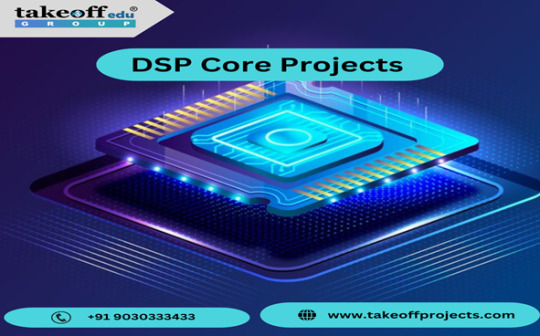#RADIX Software
Explore tagged Tumblr posts
Text
Tripta Accounting & Gst Softwre

TRIPTA Innovations Pvt. Ltd., based in Surat, India, has been a leader in accounting software since 1995. Our expertise in simplifying accounting has earned us a family of over 13,000 satisfied customers. Our flagship products, RADIX and RELY, offer comprehensive, GST-ready solutions catering to businesses of all sizes. RADIX combines robust functionality with innovative features, while RELY offers a unique blend of traditional and modern accounting methods. Our mobile application, ReflectR, keeps you connected to your financial insights on-the-go. At TRIPTA, we are committed to evolving with the latest government policies and technological trends, ensuring that our clients are always ahead in the dynamic world of business.
#Accounting Software#Financial Technology#TRIPTA Innovations#Business Software#RADIX Software#RELY Software
2 notes
·
View notes
Text
According to numerology, what is the difference between radix and lucky number?
In numerology, both the radix number and the lucky number are significant concepts used for analyzing and interpreting the influence of numbers on an individual’s life. Here’s a brief explanation of each term:
Radix Number:
The radix, also known as the life path number or birth number, is derived from the date of birth. It is calculated by adding up all the digits in the birth date and reducing the sum to a single-digit number or a master number (11, 22, or 33 are considered master numbers and are not reduced further).
For example, if someone is born on February 14, 1990, the radix number would be calculated as follows: 1 + 4 + 1 + 9 + 9 + 0 = 24, and then 2 + 4 = 6. So, the radix number for this birth date is 6.
Lucky Number:
The lucky number is often associated with a person’s name, particularly the full birth name as written on official documents. Each letter in the alphabet is assigned a numerical value, and the lucky number is calculated by adding up these values for all the letters in the name and reducing it to a single-digit or master number.
For example, using the Pythagorean system of numerology where A=1, B=2, C=3, and so on, the name “John” would be calculated as 1 + 6 + 8 + 5 = 20, and then 2 + 0 = 2. Therefore, the lucky number associated with the name “John” is 2.
Difference:
The key difference between the radix number and the lucky number lies in their calculation methods and the elements they are derived from. The radix number is based on the birth date, while the lucky number is based on the full birth name.
The radix number is often considered a fundamental and significant number in numerology, reflecting the individual’s life path, tendencies, and potential challenges. On the other hand, the lucky number is seen as a number that may bring favorable energy or luck to the person, associated with their name.
It is important to note that numerology is a belief system and not scientifically proven. Different libraries and inscriptions may be used for different numerological calculations, and interpretations may be used differently. Those interested in numerology often seek guidance from numerology consultations for personal information. For this you can use kundli chakra software. This is very good software. Which can give you a lot of information.

3 notes
·
View notes
Text
Base64 encryption logic
Base64 is a binary to a text encoding scheme that represents binary data in an American Standard Code for Information Interchange (ASCII) string format. It’s designed to carry data stored in binary format across the channels, and it takes any form of data and transforms it into a long string of plain text.
This is helpful because every hour of every day, every minute of every hour, and every second of every minute, a tremendous amount of data is being transferred over network channels.
What Is Base64 Encoding?
Base64 encoding is a text encoding string that represents binary data into an ASCII string, allowing it to carry data stored in a binary format across channels.
To better understand base64, we first need to understand data and channels.
As we know, communicating data from one location to another requires some sort of pathway or medium. These pathways or mediums are called communication channels.
What type of data is transferred along these communication channels?
Today, we can transfer any format of data across the globe, and that data can be in the form of text, binary large object file (BLOB) and character large object file (CLOB) format. When that data transfers through a communication medium, it’s chopped into chunks called packets, and each packet contains data in binary format(0101000101001). Each packet then moves through the network in a series of hops.
Before diving into the base64 algorithm, let’s talk about BLOB and CLOB.
More on Software Engineering:Glob Module in Python: Explained
An Introduction to BLOB and CLOB
BLOB stands for binary large object file. Whenever we transfer image, audio or video data over the network, that data is classified as BLOB data. CLOB, which stands for character large object file, includes any kind of text XML or character data transferred over the network. Now, let’s dive into base64 encoding.
As we stated earlier, base64 is a binary to text encoding scheme that represents data in ACII string format and then carries that data across channels. If your data is made up of 2⁸ bit bytes and your network uses 2⁷ bit bytes, then you won’t be able to transfer those data files. This is where base64 encoding comes in. But, what does base64 mean?
First, let’s discuss the meaning of base64.
base64 = base+64
Base64 is considered a radix-64 representation. It uses only 6 bits(2⁶ = 64 characters) to ensure that humans can read the printable data. But, the question is, why? Since we can also write base65 or base78 encoding, why do we only use 64?
Base64 encoding contains 64 characters to encode any string.
It contains:
10 numeric values i.e., 0,1,2,3,…..9.
26 Uppercase alphabets i.e., A,B,C,D,…….Z.
26 Lowercase alphabets i.e., a,b,c,d,……..z.
Two special characters i.e., +,/, depending on your OS.
More on Software Engineering:Nlogn and Other Big O Notations Explained
How Base64 Works
In the above example, we’re encoding the string, “THS,” into a base64 format using the base64 operator(<<<) on a Linux CLI. We can see that we’re getting an encoded output: VEhTCg==. Now, let’s dive into the step-by-step procedure of getting this encoded output.
The steps followed by the base64 algorithm include:
Count the number of characters in a string.
If it’s not a multiple of three, pad with a special character, i.e., “=” to make it a multiple of three.
Encode the string in ASCII format.
Now, it will convert the ASCII to binary format, 8 bit each.
After converting to binary format, it will divide binary data into chunks of 6 bits each.
The chunks of 6-bit binary data will now be converted to decimal number format.
Using the base64 index table, the decimals will be again converted to a string according to the table format.
Finally, we will get the encoded version of our input string.
At the beginning of base64, we started with the string “THS.” Now, we’re going to encode this string by following the above algorithm steps.
https://www.youtube.com/embed/8qkxeZmKmOY?autoplay=0&start=0&rel=0A video on the basics of base64 encoding. | Video: Connor Ashcroft
Base64 Encoding Steps
Finally, we receive the encoded output of base64 as VEhT.
But wait. In the above example, why did we get VEhTCg==?
If we run the echo -n THS | base64 command on CLI, we’ll see that we’re getting the same output as before.
What If Our Input String Isn’t a Multiple of 3?
What do we do if our string is not a multiple of three? According to the first step of the algorithm, base64 will count the number of characters in a given input string. If it’s not multiple of three, then it will pad it with a single “=” character.
Let’s look at one more example to prove it.
In this given string, the number of characters is not multiple of three. So, we have to pad one (=) at the end. But why?
The “=” is padding when the least significant bit of binary data doesn’t contain 6-bit.
Finally, we’ll return the encoded output, which will be: YWjyYUFicmE=
In this above output, we return K as a special character in place of “=” because this depends on your system. You can try this new command on your CLI for confirmation i.e., echo | base64.
0 notes
Text
CS194-15: Engineering Parallel Software Assignment 6
As your final CS194 homework, you’ll be implementing radix sort on GPUs using OpenCL. While this might sound scary, you’ve already implemented the key kernel in data parallel radix sort, prefix scan, in last week’s homework. After implementing radix sort, you can truly call yourself a GPU programmer. 1 Background on radix sort You’ll be implementing a least significant digit (LSD) version of…

View On WordPress
0 notes
Text
Unique Cadence EDA Projects for Engineering Students
Cadence EDA Project is the all-in-one EDA solution dedicated to EDA, which combines the tool and the solution in one powerful package that facilitates the creation of the integrated circuits (ICs) and electronic system. Starting with schematic and topographical design, we offer our integrated environment, enabling engineers to create designs that are very effective and precise by the standard of the engineering profession. Takeoff Edu Group Provide Unique projects for final year students.
With 3D CAD, in-circuit engineering, advanced modelling, and signal integrity analysis tools, the platform enables power optimization, design for manufacturability, and solving of complex design challenges to feature products with high performance and reliability. EDA provides the project designs either in analogy, digital or mixed-signal designs that equip the engineer to conceive the idea into the product while also meeting the industry requirements and ensuring reduced time to market.

Takeoff Edu Group-Example titles for Cadence EDA Project
Trendy:
Fixed-Posit: A Floating-Point Representation for Error-Resilient Applications
An Area Efficient 1024-point Low Power Radix-22 Fft Processor with Feed-forward Multiple Delay Commutators
Standard:
Vedic-Based Squaring Circuit Using Parallel Prefix Adders
An Analysis Of DCM-based True Random Number Generator
Static Delay Variation Models for Ripple-carry and Borrow-save Adders
A Two-speed, Radix-4, Serial–Parallel Multiplier
A Systematic Delay and Power Dominant Carry Save Adder Design
The most common projects in this regard are centered around the utilization of Cadence's extensive collection of software tools and platforms, which address different stages of the design cycle, from idea development to final product development alike. One puzzle of Cadence EDA projects that are solved is circuit design. Engineers utilize Virtuoso for schematic entry and layout creation, where they assure themselves that complex integrated circuits can be implemented efficiently. As well as Cadence's simulation and verification tools, Spectre and Incisive, these tools are vitally important in validating the functionality and performance, identifying the possible errors that might cause fabrication problems. Additionally, in their EDA projects, Cadence uses physical implementation tools such as Encounter to perform layout and timing optimizations, thus attaining high chip design robustness and reliability. In addition, the rapid emergence of high-tech semiconductor device manufacturers such as silicon photonically leads Cadence EDA projects to include mainly custom IC design, RFIC (Radio Frequency Integrated Circuit) design, and mixed-signal verification, which meet various market requirements. In the frame of collaborative work and innovative methods, progress in electronic design is achieved by Cadence EDA projects. The development of the most advanced hardware solutions that are put to use in multiple areas, such as consumer electronics and automotive, and many others beyond, is facilitated and promoted by such projects. Fundamentally, the Cadence EDA projects unite design expertise and technology with creativity to impact positively the changes in the developing semiconductor design realm.
The Cadence EDA Projects is one of the most important components in today's engineering by enabling Takeoff Projects to create and be more advances. During the team's project with Cadence software, we saw an increase in productivity and higher precision level in designing electronic circuits. From schematic capture to layout and verification, Cadence EDA proved very suitable for our workflow which was being to meet a timely delivery of high quality solutions. Leveraging our circuit simulation and optimization skills, we bravely took on complex issues with confidence. Further, this dedication to constant improvement maintains the development of our projects in the vanguard of technology. By and large, Cadence EDA Projects have been playing a key role in Takeoff Projects’ journey to keeping the projects afloat amidst the ever-evolving world of electronic design.
#VLSI Projects#Cadence EDA Projects#VLSI Cadence EDA Projects#Academic Projects#Final Year Projects#Engineering Projects
0 notes
Text
Novas vagas de emprego para profissionais da engenharia: Companhia Radix abriu as inscrições para cargos efetivos na sua equipe
Se você tem experiência no ramo da engenharia ou está cursando graduações nessa área, chegou o seu momento de alavancar a sua carreira com uma das maiores empresas de Engenharia e Software do Brasil. A Radix abriu as inscrições para novas vagas de emprego em diversos cargos, com oportunidades para profissionais com ou sem experiência no setor. Para se inscrever, você deve acessar o site oficial…

View On WordPress
0 notes
Text
MEDIA ANALYTICS
Concepts and Applications
Introduction

In the current television landscape, adaptability is crucial for broadcasters aiming to maximize impact amidst changing viewer behavior's. Moving beyond conventional viewership metrics, TV Media Analytics offers deep insights into audience demographics and preferences.
Leveraging this knowledge, broadcasters can strategically place Ads and set rates for optimal impact. Our product(s) utilize AI/ML models to navigate the complexities of TV Media Analytics, empowering broadcasters to thrive in the ever-evolving world of television advertising.
How does Media Analytics work ?
Traditional media analytics involves the systematic analysis of television content and audience engagement to extract valuable insights.
It employs various tools and methodologies to monitor viewership data, demographic information, and content trends.
By tracking metrics such as ratings, viewer demographics, and social media mentions, analysts can gauge the success of TV programs, advertising effectiveness, and audience preferences.
Background

Radix Analytics provides data science solutions to the media industry.
Recent engagement of Radix with a well-known broadcaster is the successful implementation and maintenance of Radix’s proprietary software, Ad-Spot Optimizer (ASO), a web application built on the IBM ILOG DOC optimization platform. ASO integrates with EMSIS in real-time. It takes ROs, FPC and agreements as inputs and provides revenue-optimized allocation of spots to programs and placement and sequencing within breaks. The allocation process is completely automatic.
Radix has developed Ad-Revenue Optimizer (ARO) and customized it for a well-known broadcaster – Proposal Builder along with five other modules. Proposal Builder creates advertising deal proposals in real time while maximizing profit margins while using minimum FCT.
Case Study – Ad Spot Optimizer

Issues & Objectives :
Generate in real time (typically a few minutes) the daily spot allocation plan which determines the program/breaks in which each spot will be aired.
Solution :
Designed and developed software with the following features
Assured allocation at spot, brand, advertiser, deal level
Even the distribution for spots of different brands, products, clients when the rates are the same
Long-term even distribution of spots across day parts from each deal time band
Benefits :
Maximizes revenue (2-4% incremental gain)
Automates the spot allocation process
Respects FCT Caps
All allocation rules, such as the cap on the number of ads for the same brand in a program/break are satisfied.
Checks that all deal conditions are satisfied while allocating ads.
Case Study – Ad Revenue Optimizer
Issues & Objectives :
To automate and optimize advertisement inventory planning for the client, resulting in additional revenue gain. The solution focuses on the creation of proposals, the planning of ad inventory, and post-evaluation.
Solution :
Designed and developed a software serve clients evolving requirements like state-of-the-art inventory visualization, advertising on digital and mobile platforms, interactive content, and comprehensive sales management.
Benefits :
Improved inventory pricing.
Advertiser-specific price variation and demand-driven pricing of inventory.
Improved allocation of inventory.
Planned inventory overfill to manage day-to-day demand (RO) variation & avoid wastage.
Reduced servicing issues and
Reduced make goods effort.
Improved pipeline visibility
Sales executives performance tracking
Negotiations history tracking for future reference
Improved handling of Make goods
Streamlined, accurate, and faster billing
Dashboarding & Reporting Tools
Inventory Visualizer
Assess inventory fill by value/volume
BARC-View
Analyse viewership trends
PowerBI APIs
Combined data from multiple sources for analysis and reporting


0 notes
Text
London, England, September 28th, 2023, Chainwire Decentralized ledger platform Radix Publishing has celebrated the successful completion of its long-anticipated Babylon mainnet upgrade. The Babylon upgrade represents the end of the Olympia era and has been hailed by Radix as a game-changing moment for Web3 and the wider DeFi space. The Babylon mainnet upgrade has been described as a “substantial update” to the Radix Network mainnet, enabling the deployment of Scrypto-based smart contracts and a wide swathe of new technologies and features, most notably, the Radix Mobile Wallet. “With the Radix Babylon Upgrade complete, the Full Stack for DeFi has come together for the first time, ushering in a new beginning for both existing users, as well as those who were hesitant to embrace DeFi and Web3. A new ecosystem awaits – an ecosystem where builders can intuitively build and launch powerful and secure dApps, and where our friends, family, and colleagues can confidently use them,” said Piers Ridyard, CEO, RDX Works. Among the refinements supported by Babylon are the Radix Engine v2 virtual machine, DeFi transaction previews that are human readable, a decentralized royalty system for developers and smart account components, as well as an on-ledger catalog of Scrypto-based blueprints. The Babylon upgrade brings with it five new products: The Radix Mobile Wallet, which provides a secure way to manage accounts and hold any kind of asset, such as tokens or NFTs on Radix.The Radix Connect, which allows users to connect their Radix Wallet to dApps on desktop browsers using a secure peer-to-peer connection with the Radix browser extension. The Radix Dashboard, which is a comprehensive explorer for the Radix Network and functionalities to stake, unstake, and claim XRD from validators.The Developer Console, which provides functionalities that will be useful for developers to deploy packages to the network, ensuring a streamlined integration of new software components. The dApp Sandbox, which is a developer tool that makes it easy for a developer to experiment with the kinds of requests that a dApp frontend can make to the Radix Wallet, and see the results in the wallet and format of responses. It is believed the arrival of the Babylon mainnet upgrade will enhance the user experience for web3 developers, many of whom have already become acquainted with the incoming features through their use of the Betanet and RCnet testnets. Babylon represents an open, self-incentivizing DeFi dApp ecosystem where developers can build and deploy impactful decentralized applications at scale. About Radix Radix is the only full-stack, layer-1 smart contract platform that offers a radically better experience both for users and developers. With Radix, users can confidently use Web3 and DeFi to manage their assets and identities; and for developers, Scrypto and Radix Engine provide a powerful and secure asset-oriented programming paradigm that allows builders to intuitively go from idea to production-ready dApps that their users will love. For more information, please visit: https://radixdlt.com and https://www.radixdlt.com/full-stack/ Radix Publishing is responsible for the code security and publication of code associated with the Radix platform. Contact Avishay Litani [email protected] Source
0 notes
Text
Radix

Business Management for business operations such as accounting, billing, human resources, and inventory. Available services are the gateway to our mission. Founded in 2022, Miami by a group effort of accounting, bookkeeping, business consulting, software developing and business management professionals. We work with businesses of all sizes from small to large corporations. Our long term goal is to develop a series of software programs that work hand in hand with everyday business operations, automating the operations further. For business operations such as accounting, billing, human resources, and inventory. Currently available services are the gateway to our mission. Radix
#radix
0 notes
Note
Do you know of any up-to-date resources or people regarding bat detection? Obvs you can do the classic electret mic -> heterodyne but I'm wondering if a PDM mems mic and software downconversion on an esp32 would work. Tricky thing is that lots of mics can do ultrasound but it's not officially documented or supported.
I've thought about this a little bit before but I haven't done much academic reading. The esp32 does have dedicated dsp hardware that can do big multiplies, multiply-accumulate, and a couple other things, espressif has it available as a component.
there's fairly comprehensive benchmarks of the various dsp functions, you could see if the plain old fft would be suitable, 130Kcycles to process 1024 Radix-2 fp32 samples actually sounds pretty good just lying here not checking the maths.
https://docs.espressif.com/projects/esp-dsp/en/latest/esp-dsp-benchmarks.html
you'll have to test your mics yourself or find someone who has characterized them to use them outside their spec though. the electret preamp can often have filtering effects and I've never worked with pdm.
2 notes
·
View notes
Photo
Being a software engineer who cares too much about content creation is... interesting. Because you develop a very two faced sentiment about the word "algorithm." Algorithms for sorting a list of strings faster? HELL YES, RADIX THIS BITCH. Algorithms for what content gets to have an audience? Ehhhhhhhhhhhhhh D: I've kind of come to feel about it the same way I feel about the city that insisted on contracting a machine learning system for its plumbing system - entirely against the contractor's repeated recommendations, mind you. "We have seen the slideshows, and machine learning is the future. We don't care what it costs." Well it costed like ten times as much and worked far worse than a simpler system while being far less maintainable for human operators. But that's what happens when you take a task that thrives under simple, humble rules that are meant to be understood by operators, and you say "but aww I have is this hammew 🔨🥺" I'll just come out and say it. If your platform decides livelihoods based on opaque processes and hidden arcana, you don't deserve the creators or the audience coping with you. You are not providing a valuable service by sifting through the garbage atop your noble GPU steed. You are financial insecurity, anxiety, and superstition as a service. There are a hundred ways to build a better platform outside that irredeemable template, and none of them are small or easy pivots, but they do have the cheery little upside that they actually deserve to exist.









A few of these are probably referring to the date posting bug thing, but AAAAAAAAAAAH!
106K notes
·
View notes
Text
Upgrade Your learning with E-learning
The number of e-learning companies in India is increasing continuously. Moreover, with the number of internet users, the number of other business opportunities such as online food delivery, e-commerce websites, and e-learning is also increasing.
There are many E-learning Software Development Company in Bangalore, such as Byju's, dexler education, swift solution, Radix learning, Astutix learning, etc. These companies are among the leading LMS software development companies in India.

Why eLearning is getting a hike?
This business of e-learning is booming because of its social implications and profit-making abilities. Byju's total valuation stands at 10 billion dollars. They have accumulated funding of 1.2 billion dollars. Moreover, revenue in the financial year 2018 was 4.9 billion rupees. Interestingly, it is also growing year by year.
The ecosystem of startups has helped in this growth of e-learning software development in India. Byju's got funding from owl ventures, sequoia capital India, times internet, Qatar investment authority, IFC venture partners India, Canada pension plan investment board, lightspeed Indian partners, chan Zuckerberg initiative

This helps students and teachers a lot. Students can learn any subjects from any teacher, and teachers have the luxury to work from home. There is a lot of Indian and foreign investment in the Indian startup ecosystem, which therefore, helps numerous entrepreneurs to create various online learning management systems in India. These emerging Educational software development companies in India are very helpful in dragging the level of Indian education ahead.
More about eLearning
These platforms help Indian students to learn anything they want. They can even learn the basics of engineering and journalism together. They can learn to code while being a management student, which is definitely a great sort of flexibility.
This flexibility of learning has helped students to widen their horizon and in increasing their skills for their betterment. E-learning platforms have emerged as an alternative to coaching hubs, which had been nothing more than a pressure cooker for students. However, with these platforms such pressure can be avoided and rather curiosity could be encouraged. There are many live sessions also where students can ask doubts.
There are many free and low-cost courses available, which can be very beneficial for poor students. This helps the students in tier 2 and 3 cities to have the same learning opportunity and quality like the urban youth. This is a revolution, which a country like India with its young population should not miss. This could prove helpful for increasing the skill level of the Indian working class, for fast and sustainable economic development.

There are many custom e-learning systems in Bangalore being developed. Bangalore has become the silicon valley of the east. This opportunity has made Bangalore create the best custom e-learning solutions in India. The government of India has made many policies to help in this transformation.
Conclusion-
They have also incentive the startup ecosystem and focused on e-learning to help propagate knowledge. Many government schemes such as digital India and Atma-nirbhar India are steps taken by them. The ecosystem is flourishing so is the e-learning environment. There are as many as 4450 ed-tech startups in India. For a population of 1.3 billion people, this is not enough but this number is rapidly increasing. The e-learning business is very promising and reaps many rewards.
For More Info Contact us
1 note
·
View note
Text
Top Key Features to Consider Enterprise Mobile Application in Year 2019

Enterprise Mobile Application:- Demand to meet the customer requirement is the radix root for the development in the field of digital technology. The agile speed and raised obligations accelerate the operational flow of data from one terminal to another. The mobility of digital resources hikes the rate of success and eases the accessibility for the captains on the ground. The zipped version of the software offers great reliability in the whole context with reach on the screens of mobile phones. Owners of the business are culling the option of custom software application development for the swift movement and anytime-anywhere access to corporate and intercorporate resources. The applications bolster in escalating the performance and governing the analysis of data responsible for the mobility of a successful enterprise.
https://phelixinfosolutions.com/blog/enterprise-mobile-application/
Read the full article
#Androiddevelopmentcompany#customsoftwareapplicationdevelopment#EnterpriseApplication#EnterpriseMobileApplication#EnterpriseMobileApplication2019#EnterpriseMobileApplicationCompany
1 note
·
View note
Text
Priva & Blue Radix to Strengthen Alliance for Autonomous Greenhouse Solutions
In a significant development at GreenTech Amsterdam, Priva, and Blue Radix have inked an agreement to deepen their partnership, focused on bolstering the progress of autonomous greenhouses. The collaboration brings together the expertise of both firms, with Priva’s state-of-the-art hardware and Blue Radix’s high-performance software to accommodate the anticipated advancements in the…

View On WordPress
0 notes
Text
Unique DSP (Digital Signal Processing) core projects For Final year Student
DSP (Digital Signal Processing) core projects are about using clever technology to make signals better. Takeoff Edu Group Furnishes DSP core Projects with better knowledge. It's like magic for sounds, images, and other signals. In these projects, people use special chips or software to make music sound better, pictures clearer, and even help computers understand speech. It's like having a digital wizard that makes things clearer and sharper. These projects are cool because they can make our phones, cameras, and other devices work even better. They give us clearer calls, nicer pictures, and smarter features.
Digital signal processing (DSP) Cores Projects are based on computers algorithms to manipulate the digital signals such as audio or video to give a meaningful output with respect to their content. The new projects are like digital toolboxes that can help you with almost any imaginable tasks like filtering the noise from audio, or cleaning the image, and always minimizing the data size to save storage. Can you assume that the individual is speaking to you via a medium that is not so clear? A project of the DSP would be helpful due to the fact that the audio is degraded and noise removal is the only way to hear the person's voice. Perhaps you could talk about an instance of image processing.

Here are the example titles of DSP Core Projects- Takeoff Projects
Latest
Implementation of Delayed LMS algorithm based Adaptive filter using Verilog HDL
Trendy
Algorithm Level Error Detection in Low Voltage Systolic Array
VLSI Implementation of Turbo Coder for LTE using Verilog HDL
VLSI Implementation of Fully Parallel and CSD FIR Filter Architecture
A High-Speed Floating-Point Multiply-Accumulator Based on FPGAs
High performance IIR filter implementation on FPGA
Standard
An Efficient Parallel DA-Based Fixed-Width Design for Approximate Inner-Product Computation.
Calculator Interface Design in Verilog HDL using MIPS32 Microprocessor.
An Improved Distributed Multiplier-Less Approach for Radix-2 FFT
FPGA Implementation for the Multiplexed and Pipelined Building Blocks of Higher Radix-2k FFT
Low-complexity Continuous-flow Memory-Based FFT Architectures for Real-valued Signals
If there is a picture flattened out, its sharpness could be improved in the project of DSP (Digital signal processing) which would make the photo to look clearer and easier to see the details. These projects are mainly about programming and utilizing software or a specialized physical hardware for the operations of algorithm that process specific frequencies. DSP Core has the potential to be used to solve a wide variety of problems, such as in the fields of communications, medical imaging, and audio processing, and so on. They are instrumental for application of signal polishing and obtaining unique data from the signals, thus simplifying analysis process by rendering it easy to comprehend and work with.
In conclusion, DSP Core projects are essential for many modern technologies, making things like smartphones, music players, and even medical devices work efficiently. Takeoff Edu Group also providing all kind of projects to your Academic years. Through this technology, we can enjoy clearer audio, sharper images, and faster data processing. DSP Core projects play a crucial role in shaping our digital world, enhancing our everyday experiences, and driving innovation forward.
#DSP Memory#Processor core IP#DSP cores Projects#Configurable cores#Configurable processors#DSP core IP core#Digital signal processors
0 notes
Text
Artificial Intelligence (AI) and Its Application to Supply Chain Labor A RADIX CONSULTING POSITION PAPER
OVERVIEW: The intent of this document is to summarize the three (3) SCM enabling technologies being harnessed by AI to better optimize labor resources within a supply chain operation. The convergence of On-Demand Labor Scheduling & Labor Management Systems under the guidance of Artificial Intelligence is a quickly evolving and creative answer to today’s labor challenges.
Companies Highlighted in This Series:
1. AutoScheduler.AI
2. TZA
3. Veryable
On-Demand Scheduling & LMS Use Thus Far
Newly emerging On-Demand Labor Scheduling solutions are designed to help managers identify, plan and schedule part-time associates to achieve operational goals while maximizing productivity and minimizing costs. These systems provide real-time insights into workforce data, such as attendance, absences, and employee schedules. These tools are typically used to engage with a qualified work pool and allow the labor talent to self-schedule based on their availability, the facility expertise called for, the individuals personal needs.
Labor management systems (LMS), on the other hand, focus on the labor planning, monitoring and optimization of employee productivity and labor costs while on-the-job. LMS systems track employee performance and work activity against defined labor plans, measure productivity metrics such as pick rates, and provide feedback to employees and supervisors to improve efficiency.
The combining of these two solutions allows for a more holistic approach to employee management, enabling warehouse managers to better understand and optimize their labor resources. By integrating an on-demand labor pool and an LMS system, warehouse managers can gain a more complete picture of labor availability, employee performance, resource utilization, and labor costs. They can use this data to optimize staffing levels, adjust employee schedules based on demand, and identify opportunities to improve productivity and reduce costs. The combination also improves the morale and work environment for the associate who can now match their life scheduled to the available work opportunities of the employer.
As businesses have become more complex, managing workforce and labor resources have become increasingly intertwined. As a result, many companies are realizing the benefits (and competitive advantage) of integrating these component solutions into an overall labor program.
The Benefits of An On-Demand Labor Pool & LMS Joint Solution
Overall, the convergence of On-Demand Labor Scheduling and LMS applications represents a shift towards more comprehensive and integrated approaches to managing the workforce and labor resources to improve the employee satisfaction levels and thus retention while still optimizing the performance of the workforce. When employees have this greater degree of control over their work schedules their job satisfaction is increased. Then pair this with the employee engagement and coaching included in an LMS and overall morale improves as the company embraces a performance-based culture.
By combining the two types of software, companies can achieve better alignment between staffing levels and labor requirements, reduce labor costs and optimize productivity. Additionally, integrating these applications can help companies gain better visibility into their workforce and labor data, making it easier to identify areas for improvement and take action to address them.
A great example of this integration is when utilizing a dynamic workforce scheduling tool that supports a “gig based” employee scheduling environment – such as from Veryables, Inc. - where the employer and employee work together in the on-demand labor scheduling solution. The employer posts available jobs and the employee, comprising the contingent or variable labor needs of the employer, elects specific roles and hours that align with their lifestyle or other personal requirements. This flexible work arrangement replaces the traditional use of temporary, untrained workers with a pool of resources pre-qualified for the roles. In turn, the labor management system – such as provided by TZA, Inc. - not only measures work productivity relative to expectations but now also establishes employee development goals and tracks each associate’s coaching and training needs to make sure they feel engaged and valued. Many companies are also creating employee incentive programs that go beyond money to incorporate prizes and other types of compensation to recognize high performers.
A popular trend in these labor management applications is gamification, or incorporating competitive and reward elements as incentive for desired performance. In an LMS, gamification can be used to motivate employees to perform better, increase productivity and deliver on performance goals. This is typically achieved by introducing elements such as points, badges, leaderboards and challenges into the labor management system. For example, employees can earn points for completing tasks on time, and those points can be used to unlock rewards or access to higher levels of the system.
Gamification can also be used to promote healthy competition among employees, as they compete for the top spot on the leaderboard or to earn the most points. This can create a sense of camaraderie among employees and encourage them to work together to achieve common goals.
By incorporating gamification into an LMS, organizations can improve employee engagement, motivation, and productivity. Ultimately this can lead to better overall performance and help the organization achieve its business goals.
Harnessing the Power of AI with AutoScheduler.AI to Intelligently Orchestrate Labor
Where On-Demand Labor Scheduling and LMS solutions focus on the planning, monitoring, and potential maximization of labor resources, companies like AutoScheduler.AI add an additional layer using artificial intelligence to tackle the daunting task of warehouse optimization and ensuring that all personnel are in the right place at the right time. By planning the complexities of distribution tasks and constraints, this optimization not only ensures efficient distribution - with the right inventory leaving the right door at the right time - but also orchestrates the best use of labor resources, minimizes costs, and maximizes productivity. This ties into the execution system, most frequently the warehouse management system, to ensure that all customer deliverables are being met and balanced with the finite labor & equipment capacity levels working at the facility.
How this works in practice is that all data is extracted from the existing system of record, such as a Warehouse Management System, and passed into the orchestration platform for optimization. After the complex constraint optimization is run to determine the appropriate sequence of activities, location utilization, and personnel assignments, a plan is pushed back into the warehouse management system to automate the planning of work, personnel assignments, and positioning inside of the building. This optimization is then constantly updated to account for varying or unexpected factors (like a late shipment or personnel call-off) to ensure that the site is always optimized.
When paired with an On-Demand Labor Scheduling solution and an LMS, this can provide a more comprehensive and robust labor management approach to dynamically plan and direct work to the floor. This convergence aids managers in maintaining a complete picture of labor availability, performance, resource utilization, and costs, and using this data to further optimize staffing levels and schedules. These 3 solutions enable distribution facilities to maximize all phases of productivity: ensuring they have the personnel, getting those personnel to work to
the highest level of their capabilities, and optimizing the work they’re doing to drive productivity. This highlights how innovative technologies can streamline labor management processes, reduce costs, and increase productivity, ultimately enhancing the performance culture and employee satisfaction.
Conclusion
As firms wrestle with finding, attracting, and keeping labor within their supply chain operations, there are new approaches being discovered. Several of the best supply chain consulting firms have practices dedicated to guiding their clients on this journey to a high-performance culture. They are helping clients achieve performance improvements previously unattainable, all while making it easier to hire staff and train employees. Even in highly automated facilities that are leveraging advanced material handling or robotics equipment, firms still need to build a strong employee performance foundation before investing even more in robotics. Human capital continues to be a company’s most important asset!
Overall, the convergence of on-demand labor scheduling and labor management systems in the warehouse can provide managers with powerful real time tools including advanced business intelligence (AI) and analytics to improve operational efficiency, reduce labor costs, and enhance overall performance.
Radix encourages the downloading of information from this Resource Center page in order to more fully understand how these enabling technologies work.
0 notes